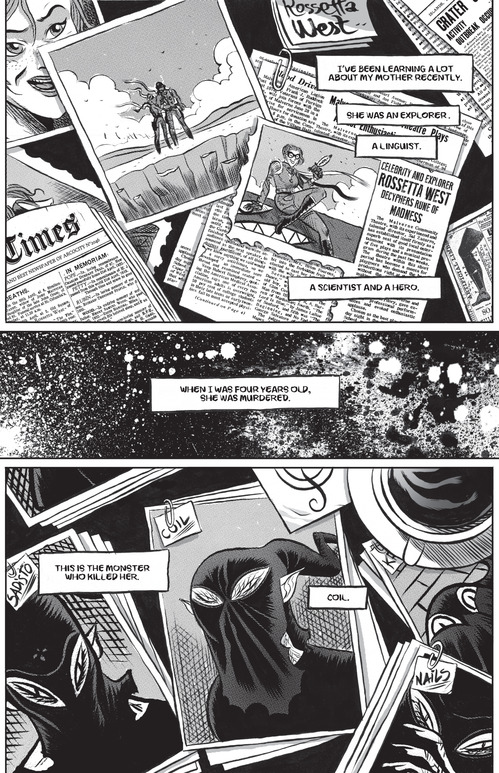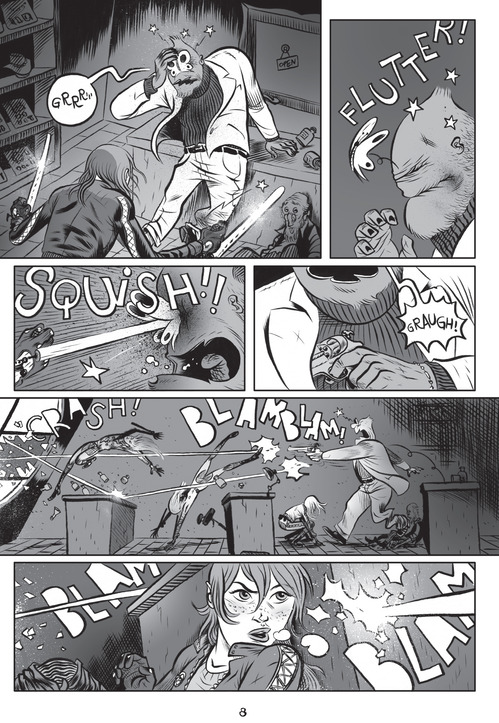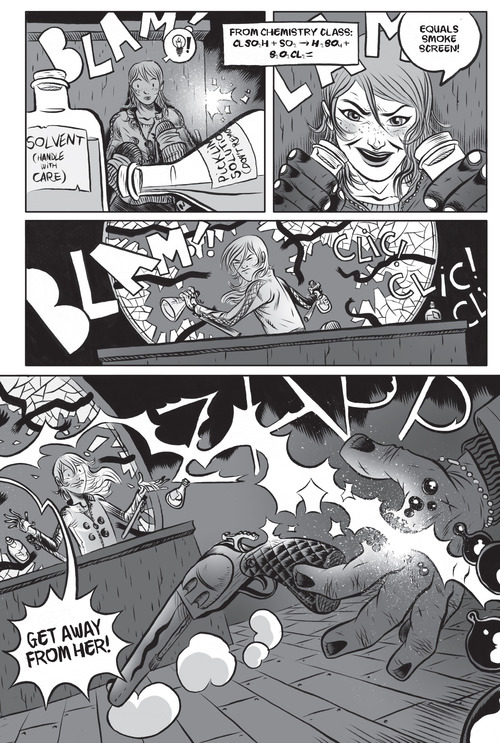Battling Boy: The Fall of the House of West by Paul Pope, J.T. Petty & David Rubín
Comics Reviews Paul Pope
Writers: Paul Pope & J.T. Petty
Artist: David Rubín
Publisher: First Second
Release Date: October 13, 2015
In 2013, Paul Pope’s long-in-the-works graphic novel Battling Boy entered the world. Given Pope’s fondness for kinetic artwork and the depiction of bodies in nearly-perpetual motion, the subject matter—a young god descending on a city to help fight a succession of monsters—seemed a fine reason to include a series of escalating battles and action setpieces. Also in the mix: A surreal calvacade of villains ranging in design from the demonic to the surreal, including one baddie whose face resembles butterfly wings.
Since then, Pope has worked with co-writer J.T. Petty and artist David Rubín on a pair of prequel volumes that expand the universe of Battling Boy and Acropolis. Though these books borrow liberally from superhero tropes, Pope and his collaborators are hearkening back to that genre’s roots in pulp. It’s an approach similar to the one undertaken by Ed Brubaker and Sean Phillips in their Incognito comics—though their take on the style is a bleaker one than the all-ages Battling Boy books.
The focus of the prequels, which bridge the first Battling Boy to its unsolicited sequel, is on the West family: science-heroes who also loom large the main narrative, and team with the title character. In the first volume, the masked, inhuman Sadisto kills Patriarch Haggard West, leaving his daughter Aurora to inherit his mantle and role as the city’s protector. In The Fall of the House of West, Aurora’s relationship with her father takes center stage, as questions emerge about her early life, the death of her mother and her connection to Coil, one of Sadisto’s henchmen, come to light.

Battling Boy: The Fall of the House of West Interior Art by David Rubín
As with Battling Boy, this volume offers plenty of extended action setpieces, though there are also more surreal moments: a subplot involving Aurora’s childhood imaginary friend allows artist David Rubín to head into some of his most memorably abstract work, for instance. At times, his figures and layouts nicely evoke Pope’s own work. He also does a fine job of giving the Wests and their associates a more clean-cut, square-jawed look. It’s an effective contrast to the more chaotic elements of the book, from its villains to assorted aerial battles.
From its title to the pulp fiction nod in Haggard West’s name, The Fall of the House of West falls firmly into archetypal territory, and Aurora’s relationship with her father feels decidedly familiar. She’s the ambitious potential hero; he’s the distant parent, unaware of his child’s goals and tortured by his own past failures. What makes this book a joy is less the familiar beats that its story hits and more the depth of its world, where moth-faced villains can loom menacingly over scientists and heroes in jetpacks can battle creatures birthed from nightmares. It’s a terrific ride.

Battling Boy: The Fall of the House of West Interior Art by David Rubín

Battling Boy: The Fall of the House of West Interior Art by David Rubín
